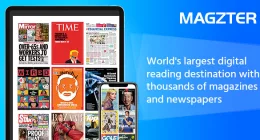Microsoft’s Global Sports Innovation Center in Madrid has identified Australia as a rife market for the company to make their mark in the sporting industry.
A non-profit organization, the Global Sports Innovation Center (GSIC) has a primary goal of improving the value chain of the sports industry by leveraging the most advanced technologies, enabling business connections and becoming a worldwide reference for the sports industry, from startups to enterprise organizations.
The global business development architect for Microsoft Sports, Jesus Serrano Castro says there is huge opportunity to use technology to improve athlete’s performance, enhance fan engagement, build ‘smarter venues’ and create new revenue streams. In an exclusive ZDNet report, Castro describes Australia as a nation that is passionate about sports, because it closely follows five to six sports (as opposed to other European nations that follow one or two). Castro further said that Australia’s sporting industry lags behind other nations when it comes to exploiting technology.
Partnering with Microsoft, the Australian Institute of Sport (AIS) has been working on the few initiatives. Ahead of the Rio Olympics in August, an effort was made to use data to boost the gold medal count for Australian athletes. Nick Brown, deputy director for Performance, Science and Innovation at the AIS, said the institute was capturing around 300 data points from 2,000 athletes each week who were preparing for the Olympics and Paralympics in Rio. He said,
We collect data on how much they trained, how they felt, how well they slept, their physiological data for the day, and physiotherapy information. And all that data is stored in one place – our Athlete Management System.
He added that psychological and physiological information such as mood, soreness, and sleep quality is highly relevant to coaches as it helps them make smarter decisions about, for example, when the next training session should take place. Brown further added,
Coaches and athletes can review all kinds of information on the dashboard and can plan the tactical aspects of the game.
Another area that Microsoft Sports is looking into is increasing fan engagement— envisioning new experiences for fans, but also identifying ways to convert those experiences into new revenue streams for sporting organizations. Casper said,
We are trying to drive deeper fan engagement with experiences inside and outside the stadium, and connect these experiences to the sporting organization’s ecosystem.
For instance, through “social listening”, Microsoft was able to determine that Real Madrid had 450 million fans around the world. Contrary to the club’s assumption, a majority of these fans were not Spanish-speaking, they were Indonesian-speaking. This knowledge prompted Real Madrid to offer an Indonesian translation of all the content across its digital communication channels to be closer to the fans.
Lastly, Castro talks about experiencing sports in a new way. Castro envisions a future where fans around the world, using technology such as the Microsoft HoloLens, can experience live games in augmented reality. He said,
In this area, what we are doing is trying to convert your living room into a stadium. You don’t need to have limitations because you have a very small TV set at home. We want to create a screen that can be as big as your own world. Instead of you trying to imagine the stadium, why not have a real-life representation of the stadium in your home? Why not open up the stadium and let you explore the stadium?
Microsoft is actively working to bring the latest to Australia— from technology to broadcasting licenses, to solidifying its position as a comprehensive enterprise solutions provider.





